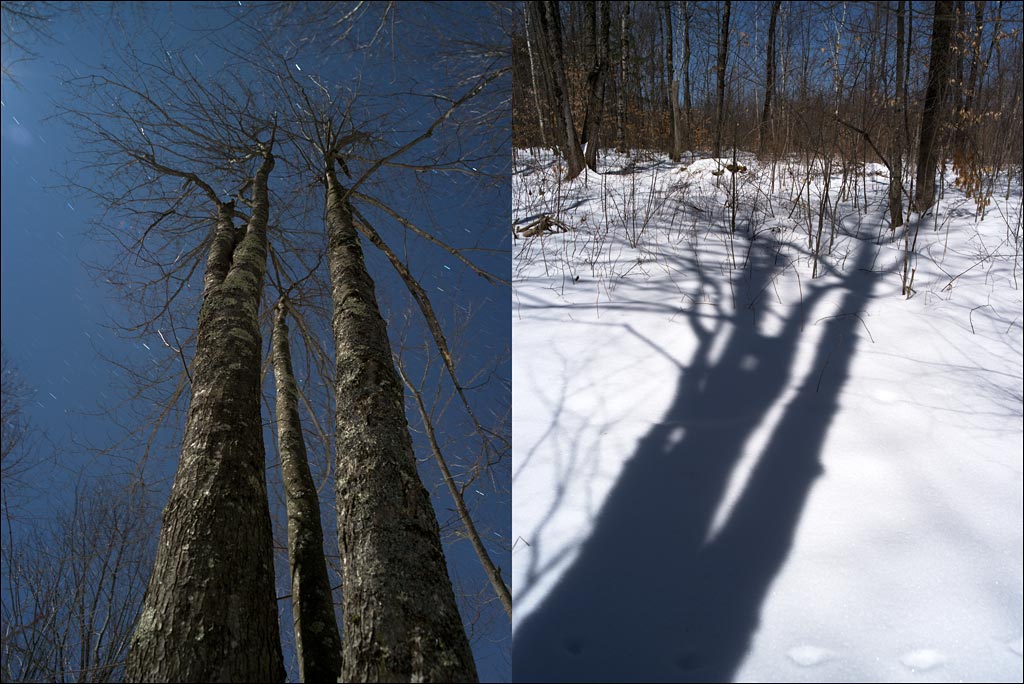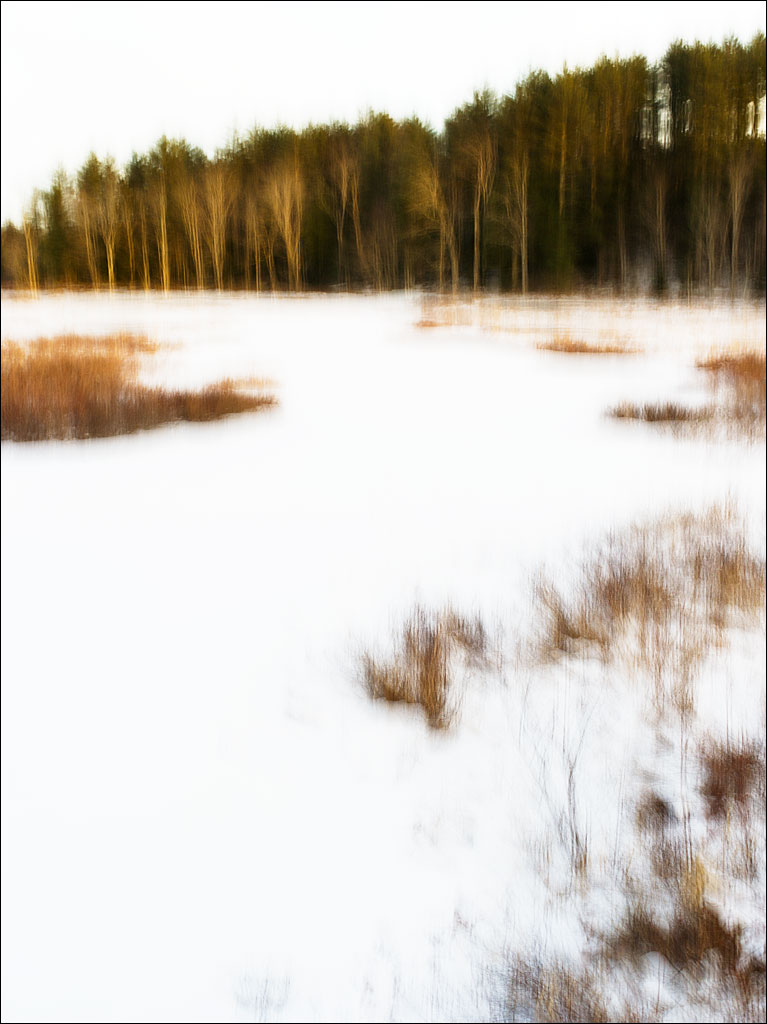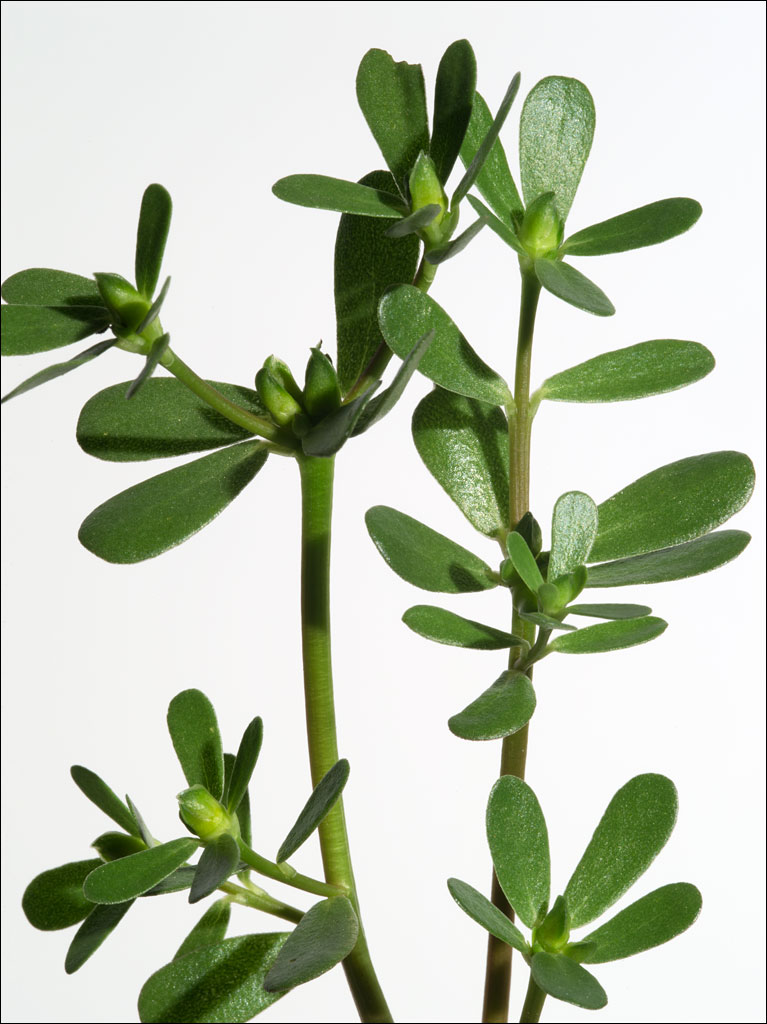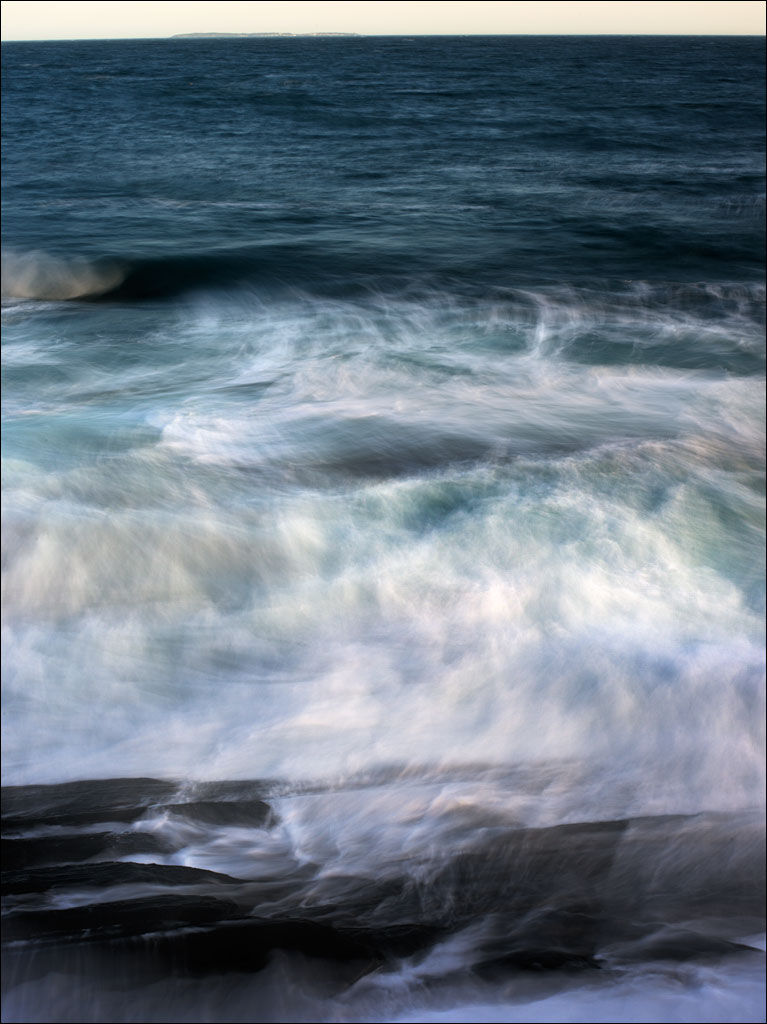 Our forest in moonlight. Click on the image for a larger view.
Our forest in moonlight. Click on the image for a larger view.
Winter Marsh
 The meandering stream bed that feeds Dyer Long Pond in Jefferson, Maine is hidden beneath the snow pack. This is very different in summer. Click on image for a larger view.
The meandering stream bed that feeds Dyer Long Pond in Jefferson, Maine is hidden beneath the snow pack. This is very different in summer. Click on image for a larger view.
Winter Ocean at Pemaquid Point
Purslane—Edible Weeds
 Purslane, Portulaca oleracea, is known as pursley in Maine. The stems and leaves are edible. The seeds can also be used for flour. Purslane can be cooked like spinach. Like spinach, it is rich in iron. We like to use it fresh in salads and smoothies. Unlike many wild plants, Purslane is not bitter and the leaves have a wonderful texture.
Purslane, Portulaca oleracea, is known as pursley in Maine. The stems and leaves are edible. The seeds can also be used for flour. Purslane can be cooked like spinach. Like spinach, it is rich in iron. We like to use it fresh in salads and smoothies. Unlike many wild plants, Purslane is not bitter and the leaves have a wonderful texture.
WARNING: Purslane can be confused with the poisonous hairy-stemmed spurge. As the name suggests, this plant has a hairy stem. A milky saps is discharged when a stem cutting is squeezed. It is important to refer to guidebooks or local foraging experts to identify plants. Please look at our posts as starting points, not as definitive references on plants.
The 88 Scared Places of Shikoku Pilgrimage
 The 88 Scared Places of Shikoku Pilgrimage is probably the most famous pilgrimage in Japan. The route circles the island of Shikoku and takes about 45–60 days to complete on foot, although there are other ways pilgrims choose to travel. Naomi and I had the great fortune to walk this path three times. This year we will be publishing our experience of this remarkable journey.
The 88 Scared Places of Shikoku Pilgrimage is probably the most famous pilgrimage in Japan. The route circles the island of Shikoku and takes about 45–60 days to complete on foot, although there are other ways pilgrims choose to travel. Naomi and I had the great fortune to walk this path three times. This year we will be publishing our experience of this remarkable journey.
These pilgrims are praying at the Daishi hall of Ryõzenji, temple number one. The four characters on the back of the hat (同行二人) are the refrain of the pilgrim—Dõgyõ ninin. Simply translated it means the same journey, two people. The second person to which it refers is Kobo Daishi, the founder of Shingon Buddhism, saint, poet, calligrapher, civil engineer, and the person credited in making this pilgrimage. While the pilgrimage is nonsectarian, every pilgrim puts their faith in O-Daishi-sama, as he is known.
Changing Seasons, Part 2
 The salt marshes and dunes at Bates Morse Mountain Conservation Area are always in flux. While we like to think of the season as four monolithic blocks clearly delineating their character to the landscape, the year passes over the land with infinitely variability. No two moments are the same. Click on the image for a larger view.
The salt marshes and dunes at Bates Morse Mountain Conservation Area are always in flux. While we like to think of the season as four monolithic blocks clearly delineating their character to the landscape, the year passes over the land with infinitely variability. No two moments are the same. Click on the image for a larger view.
Changing Seasons, Part 1
 Spring just does not simply arrive in Maine; snow and ice don’t simply vanish. Spring comes like a gentle kiss on the land, slowly melting away winter.
Spring just does not simply arrive in Maine; snow and ice don’t simply vanish. Spring comes like a gentle kiss on the land, slowly melting away winter.
This pond in the salt marshes of Bates Morse Mountain Conservation Area is just opening up. In a month or two, fish fry will populate the water. This pool is isolated from the rivers and streams that cut through the marsh, yet the fish population is stable. Amazingly, the salinity of the water is higher than the ocean that feeds the marsh.
Winter Woods
 We had two storms in succession, on Thursday and Saturday, with another predicted for next week. Our woods are very peaceful this time of year. The drifting snow makes walking tricky as it is hard to predict whether the snow pack is a few inches deep or a few feet deep. A few of the animals that live here leave the occasion tracks, but many travel under the snow in a network of tunnels.
We had two storms in succession, on Thursday and Saturday, with another predicted for next week. Our woods are very peaceful this time of year. The drifting snow makes walking tricky as it is hard to predict whether the snow pack is a few inches deep or a few feet deep. A few of the animals that live here leave the occasion tracks, but many travel under the snow in a network of tunnels.
Sulfur Cinquefoil—Wild Flowers
Yarrow—Edible Weeds
It is important to refer to guidebooks or local foraging experts to identify plants. Please look at our posts as starting points, not as definitive references on plants.
 Yarrow, Achillea millefolium, is well known as a medicinal herb. The leaves are bitter, but can be eaten raw or cooked; we put young leaves in a smoothies with other greens. We use the flowers to make tea as well as a vodka tincture we add to tea. For bug bites and cuts, we make a tincture with the flowers and leaves.
Yarrow, Achillea millefolium, is well known as a medicinal herb. The leaves are bitter, but can be eaten raw or cooked; we put young leaves in a smoothies with other greens. We use the flowers to make tea as well as a vodka tincture we add to tea. For bug bites and cuts, we make a tincture with the flowers and leaves.


